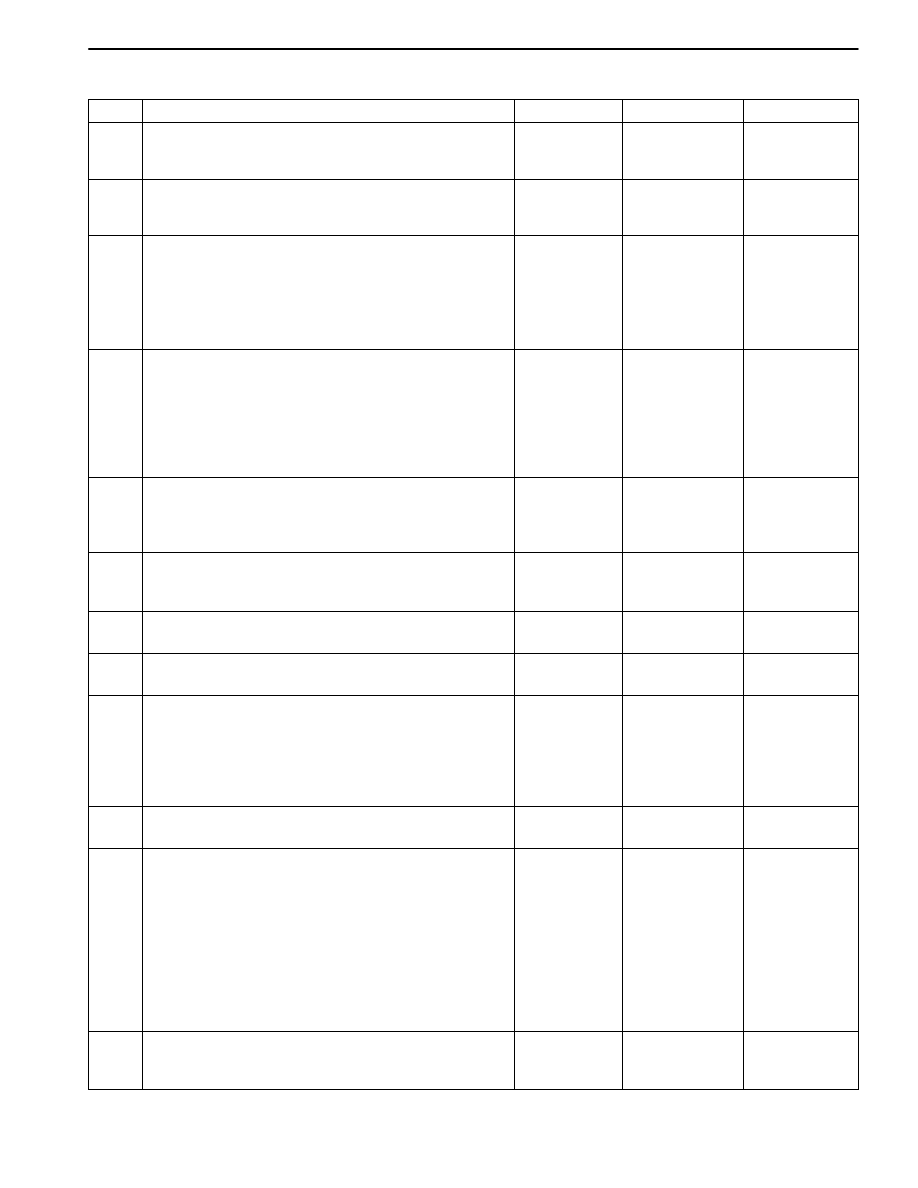Daewoo Matiz (2003 year). Manual - part 97

1F – 298 ENGINE CONTROLS
Rough, Unstable, or Incorrect Idle, Stalling (Cont’d)
Step
Action
Value(s)
Yes
No
12
Is the long term fuel trim reading below the value
specified?
–20%
Go to
“Diagnostic Aids
for DTC P0172”
Go to Step 13
13
Is the long term fuel trim reading above the value
specified?
25%
Go to
“Diagnostic Aids
for DTC P0171”
–
14
1. Disconnect all of the fuel injector harness
connectors at the fuel injectors.
2. Connect an injector test light between the
harness terminals of each fuel injector connector.
3. Note the test light while cranking the engine.
Does the test light blink for all of the fuel injectors?
–
Go to Step 16
Go to Step 15
15
1. Repair or replace the faulty injector drive circuit
harness, the connector, or the connector
terminals as needed.
2. If the harness, the connectors, and the terminals
are OK, replace the Engine Control Module
(ECM).
Is the repair complete?
–
System OK
–
16
Measure the resistance of each of the fuel injectors.
Is the resistance within the value specified (the
resistance will increase slightly at higher
temperatures)?
11.6–12.4
Ω
Go to Step 18
Go to Step 17
17
Replace any fuel injectors with a resistance that is
out of specifications.
Is the repair complete?
–
System OK
–
18
Perform an injector diagnosis.
Is the problem found?
–
Go to Step 19
Go to Step 20
19
Replace any leaking or restricted fuel injectors.
Is the repair complete?
–
System OK
–
20
1. With the engine OFF, disconnect the fuel
pressure regulator vacuum hose.
2. Thoroughly inspect the fuel pressure regulator
vacuum port and the fuel pressure regulator
vacuum hose for the presence of fuel.
Is the problem found?
–
Go to Step 21
Go to Step 22
21
Replace the fuel pressure regulator as needed.
Is the repair complete?
–
System OK
–
22
1. Check the ignition system output voltage for all of
the cylinders using a spark tester.
2. Inspect the spark plugs for excessive wear,
insulation cracks, improper gap, or heavy
deposits.
3. Inspect the ignition wires for cracking, hardness,
or improper connections.
4. Replace any ignition wires with a resistance over
the value specified.
Is the problem found?
30000
Ω
Go to Step 23
Go to Step 24
23
Repair or replace any ignition system components
as needed.
Is the repair complete?
–
System OK
–